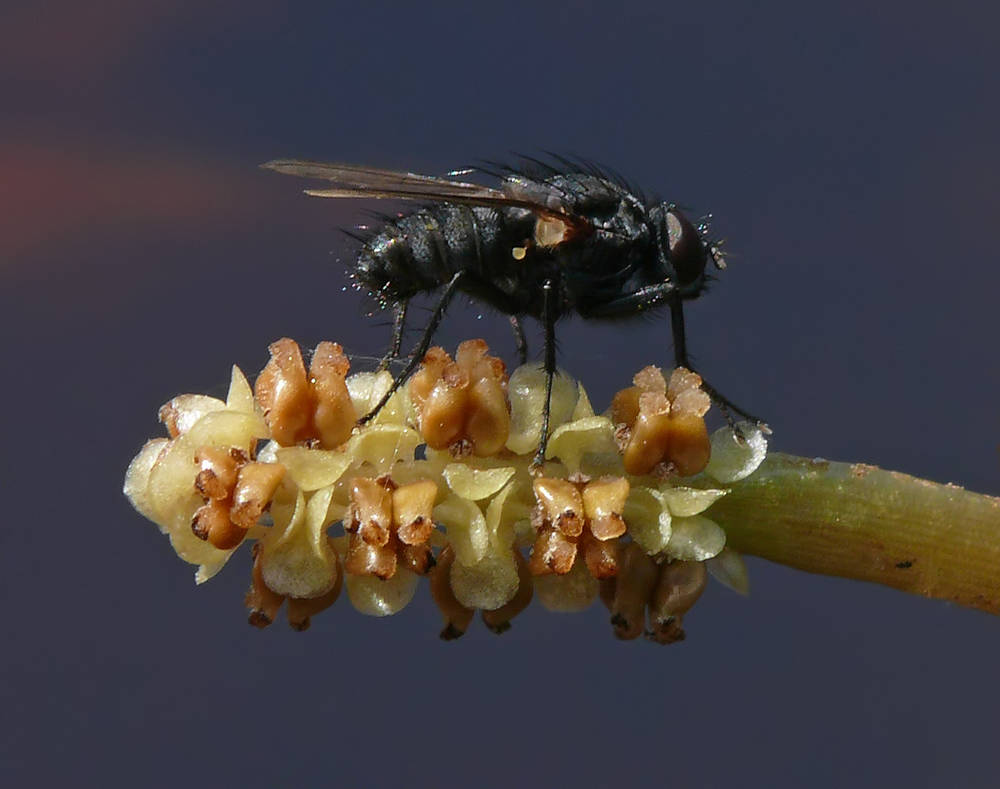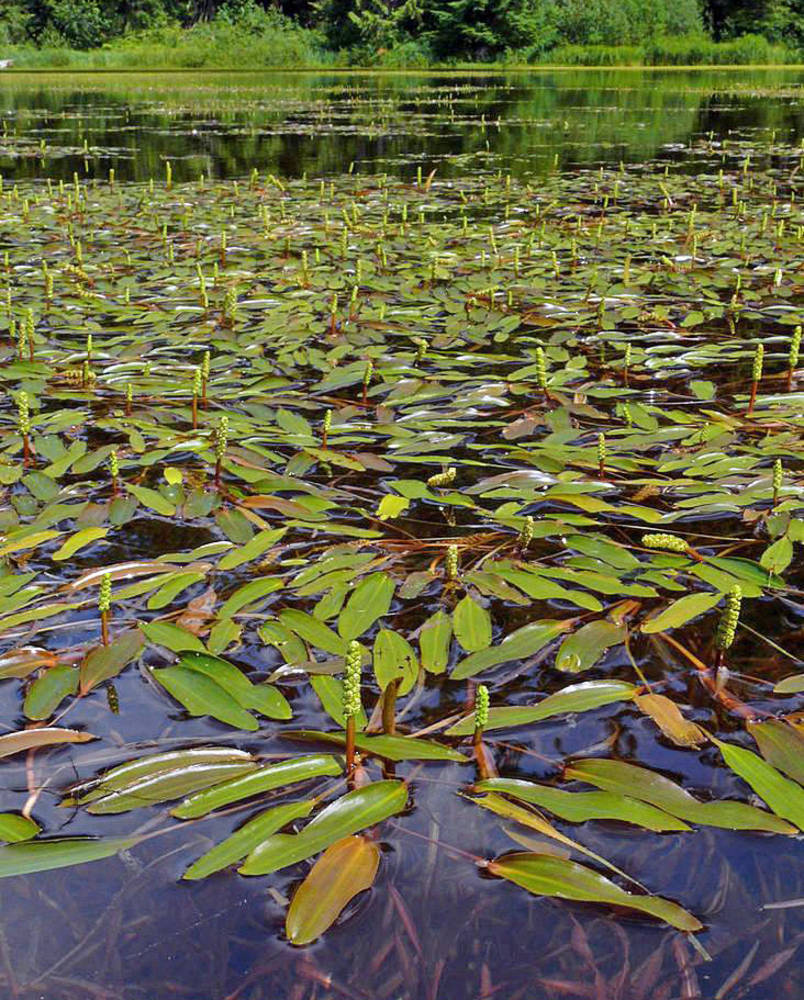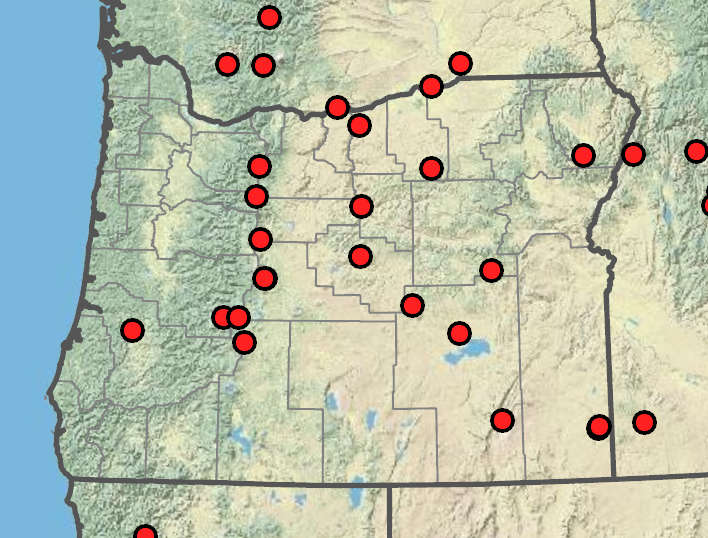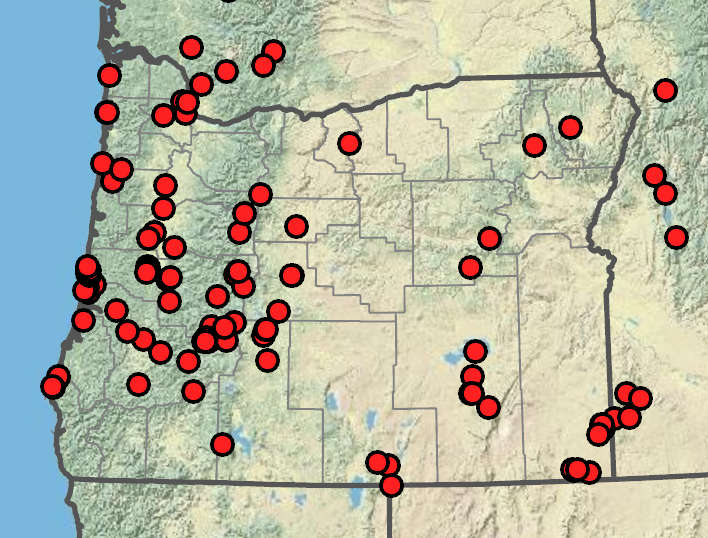Potamogeton alpinus
Potamogeton epihydrus
northern pondweed, reddish pondweed
ribbon-leaf pondweed, ribbon-leaved pondweed
terete; to 200 cm; nodal glands absent.
flattened, 10–90 cm; nodal glands absent.
submersed and floating or submersed only.
submersed and floating or submersed only.
elliptic or oblanceolate to obovate or oblonglinear, 40–70(100) × 10–25(40)mm; reddish green;
base gradually tapering to petiole;
tip obtuse or acute;
veins (7)9–13(15);
petioles 0–12 mm.
narrowly oblanceolate to elliptic, 20–80 × 4–20 mm;
base acute;
tip rounded or bluntly cuspidate;
veins 11–41;
petioles 20–125 mm.
sessile, attached to stem nodes, not attached to stipules;
stipules (12)15–25(40)mm;
tip blunt;
blades oblong-linear to linear-lanceolate, 45–180(250) × 5–20 mm;
base rounded to cuneate;
margins entire;
tip obtuse or acute; lacunae in 0–6 rows on each side of midvein;
veins 7–9.
sessile, attached to stem nodes, not attached to stipules;
stipules 10–30 mm;
tip obtuse;
blades linear, 50–220 × 1–10 mm;
margins entire;
tip blunt to acute; lacunae forming a prominent band along the midvein;
veins 3–13.
emersed;
spikes cylindric, 10–35 mm;
peduncles terminal or axillary; erect, 30– 100(160)mm.
emersed;
spikes cylindric, 8–40 mm;
peduncles axillary; erect, 15–50(160)mm.
pedicellate, obovoid; turgid; (2.5)3–3.5 × (1.7)2–2.4 mm, dorsally keeled, laterally keeled or not;
beaks dorsally curved, 0.5–0.9 mm.
sessile; round to obovoid, flattened, dorsally and laterally keeled, 2.5–4.5 × 2–3.6 mm; greenish brown;
beaks erect, 0.5 mm.
Potamogeton alpinus
Potamogeton epihydrus
Ponds, lakes, and slow-moving streams. 1200–2200m. BR, BW, Casc. CA, ID, NV, WA; north to British Columbia, east to Greenland; Eurasia. Native.
Potamogeton alpinus is often red when fresh. This species hybridizes with P. nodosus, P. gramineus, and P. praelongus.
Still or flowing waters of lakes, ponds and streams. 0–2000m. All ecoregions except Col. CA, ID, WA; north to AK, east to Newfoundland, southeast to FL; Europe. Native.
Potamogeton epihydrus is distinguished by submersed linear leaves with a prominent band of lacunae along the midvein. This species hybridizes with P. gramineus and P. nodosus.
Nick Otting, Richard Brainerd, Barbara Wilson
Nick Otting, Richard Brainerd, Barbara Wilson
- Local floras:
BC,
CA,
OR,
WA
- Local Web sites:
CalFlora,
CalPhotos,
Flora NW,
PNW Herbaria
WildflowerSearch
iNaturalist (observations)
USDA Plants Database
- LBJ Wildflower Center
- SEINet
- Plants of the World Online
- Encyclopedia of Life
- Wikipedia
- Google Image Search
- Local floras:
BC,
CA,
OR,
WA
- Local Web sites:
CalFlora,
CalPhotos,
Flora NW,
PNW Herbaria
WildflowerSearch
iNaturalist (observations)
USDA Plants Database
- LBJ Wildflower Center
- SEINet
- Plants of the World Online
- Encyclopedia of Life
- Wikipedia
- Google Image Search





